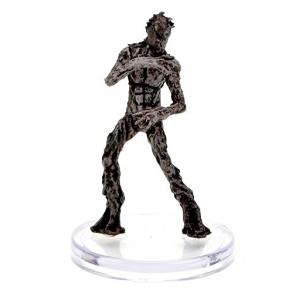

For example, some diseases infect only juvenile needles, and not mature growth. If trees are infected, identify the needlecast or tip blight disease first to determine the approximate timing of application. Susceptible trees and those that are planted in dense stands can be sprayed with a fungicide at 7- to 10- intervals between applications. Avoid overhead watering or pruning when the trees are wet. Dip tools in rubbing alcohol or 1 part bleach mixed with 4 parts water between cuts. Shear healthy trees before shearing infected trees to minimize any transfer of inoculum. Check plants several times each season to monitor needlecast and tip blight diseases.Ĥ. Avoid planting new seedlings next to established, older evergreen trees when possible.
#Dnd needle blight free
This increases air flow and reduces free moisture.ģ. Promote good tree vigor by watering during drought periods and fertilizing according to a soil test report. Avoid planting pine species and varieties that are highly susceptible to any needlecast or tip blight disease.Ģ. Purchase disease-free, healthy nursery stock. Control involves enhancing air flow, removing infected debris and therefore lowering the amount of inoculum, and the application of fungicides to prevent infection.Ĭontrol of Needlecast and Evergreen tip blights:ġ. Depending upon the fungal pathogen, infection can be either on current or old needles, or both. Needlecast diseases appear as spot infections on the needles that can turn into yellow or brown bands. Poor vigor due to other factors will increase the severity of needlecast and tip blight diseases. The disease causes foliar necrosis, premature needle.

Needlecasts in the Midwest can be quite damaging on Scots pine located in windbreaks, in ornamental plantings or in nurseries. Dothistroma needle blight (DNB) is one of the most important and damaging diseases of pines worldwide, affecting over 109 Pinaceae taxa 1. Needlecasts and tip blights can become so severe that after repeated annual infection, even large trees may die. Premature loss of needles disfigures the tree and eventually lowers its vigor. When severe, limbs over the entire tree can be affected. Needlecasts and evergreen tip blights characteristically occur on the lower branches and work upward in successive years. Tip blights are caused by certain fungal pathogens that infect the growing ends of branches and cause the tips to die, resulting in needle drop and terminal bud death. Needlecast diseases can also be important in residential landscapes where plantings are dense and humidity remains high because of the lack of air flow. Needlecasts are important problems in windbreaks and Christmas tree nurseries where large blocks of the same species is being grown in close proximity to each other. General Recommendations: Fungal pathogens that infect the needles of conifer trees and cause the needles to fall are called needlecast diseases.


 0 kommentar(er)
0 kommentar(er)
